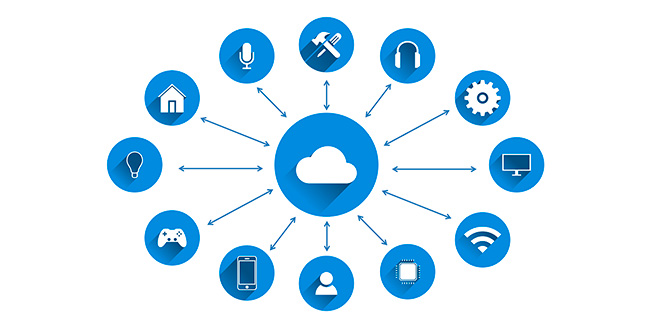

Connecting the World: IoT Implementation Challenges for Business


Nowadays, a large amount of people have heard about the IoT and an IoT device, meaning The Internet of Things. But what exactly does it mean and what role does it play in business nowadays? IoT has changed and revolutionized various business sectors, bringing smart solutions starting from factories and healthcare systems, IoT has the potential to change other sectors even more. According to the Statistica, the number of IoT devices will grow to 75.44 billion worldwide by 2025. This number shows that businesses are all about IoT adoption and allow it to impact their business. However, as the number of IoT devices is growing, there are still some IoT challenges and complexities.
This article will review the definition, benefits, and issues connected to IoT challenges and solutions.
Understanding the IoT Device
What is IoT? IoT is a kind of network that connects a lot of devices, such as smartphones, etc. They all are connected to the Internet, making them one network called the Internet of Things. IoT devices connect to the Internet, so it is easy to hack them, making people think about IoT concerns.
IoT Device Technological Interoperability Issues
One of the Internet of Things challenges is its technological interoperability, which happens due to its implementation. In turn, interoperability can create poor IoT device integration and poor integration into the existing business ecosystem. Such IoT adoption challenges create situations where these issues can create a barrier between devices. To overcome this problem, businesses should consider working with IoT vendors who focus on compatibility and use middleware solutions. Such steps may result in smooth and seamless integration.
Security challenges in IoT devices
With billions of connected devices, IoT security challenges become the number one concern. What is more important to notice is that each device becomes a potential entry point for cyber-attacks, creating a big risk. According to the Nokia threat intelligence report, 33% of overall infections came from mobile networks, such as IoT. Security measures for IoT devices are paramount. Strong encryption, constant security updates, and network access control will help in making IoT security challenges less impactful. Using privacy-by-design can also allow people to keep their data secure from leaking.
Cost of IoT Integration
Small and mid-sized businesses can face a significant problem connected to the price of IoT integration. Integrating IoT can be expensive as it requires considerable upfront investments in hardware, software, and infrastructure. To overcome these challenges of implementing IoT, businesses may consider using cloud-based IoT services or scalable platforms without upfront payments. Cloud-based and scalable platforms can make prices much lower for businesses facing challenges when implementing of Internet of Things.
Data Management and Analytics
With IoT producing a large amount of data, it can be both an opportunity and a challenge. IoT devices produce a huge amount of data, which can be both an opportunity and a challenge. Handling, storing, and analyzing this data to get useful insights can be tough. There are existing robust data analytics platforms as well as AI platforms that process real-time data and make IoT management more effective. At the same time, such technology as edge computing allows the processing of data right where it was generated.
Scalability Challenges
Every business using IoT technology wants to develop and expand it, making the number of devices connected bigger. In this case, processing data can become a bit of a challenge. In order to make sure that businesses’ IoT systems work correctly and ensure long-term success, they need to be scalable. For IoT systems to be scalable, businesses may consider the following steps: use of cloud infrastructure and microservices can be an effective solution for IoT systems scalability. Keeping these steps and techniques in mind, businesses can ensure smooth and scalable systems.
Integrating IoT with Existing Legacy Systems
When considering using IoT systems in legacy systems, issues might appear. Legacy systems that are too old may not be just built for working with modern technologies and connecting devices. In this case, the IoT device connection can be expensive and difficult to do. But there’s still a way to implement IoT technology into the existing legacy system. First, businesses should consider some stages in integration, like adding a new IoT device while keeping the old system working. Another way is to use API gateways, they can also help in old systems and IoT device communication.
Conclusion
There are many challenges associated with IoT, but businesses can easily overcome them using good planning and the correct solution that we discussed in today’s article. IoT can be easily integrated into business operations in case of successful management of such issues as technological interoperability, security, costs, data management, and scalability.
To know more about the way your company can implement IoT technology into your business, contact us today. Our company offers comprehensive IoT software development solutions. Know more about how we can help you harness the full potential of IoT for your business needs.
More Articles

Blockchain in Cybersecurity: Fortifying Security in the Digital Age Blockchain in Cybersecurity: Fortifying Security in the Digital Age
With its decentralized and secure framework, blockchain in cybersecurity is disrupting a wide range of industries. And it has its impact has spread far beyond digital currencies. In today's world, cybersecurity has become a real concern for many industries and businesses, individuals, and governments.

Google Med-Gemini: a Great Step in Medicine Google Med-Gemini: a Great Step in Medicine
As AI continues to develop and make our lives better and easier, Google recently announced the launch of Med-Gemini, an AI model designed specifically for the Medical field and needs. This model can make diagnostics more accurate and efficient, making this step a big one in AI integration into medicine.
